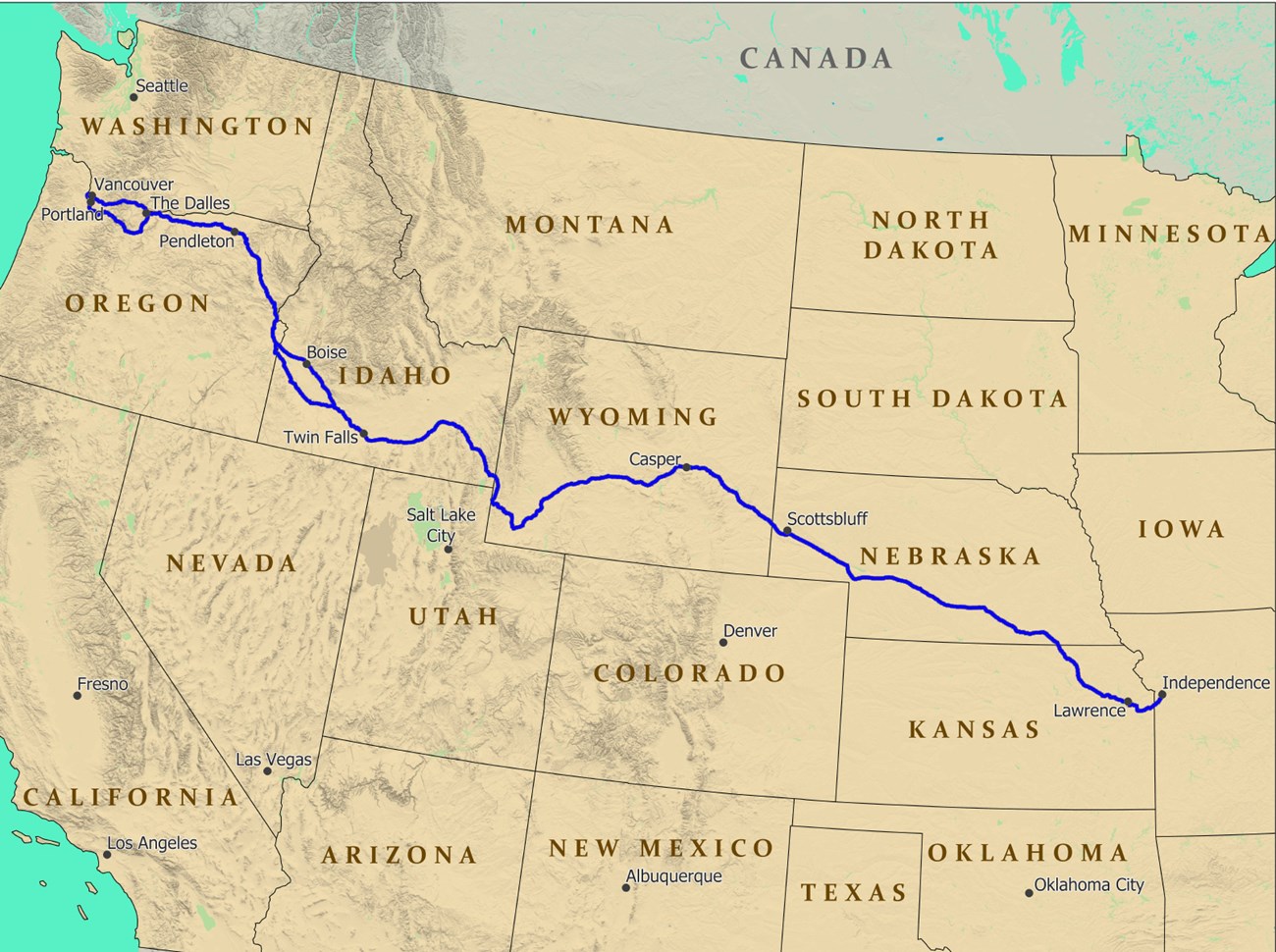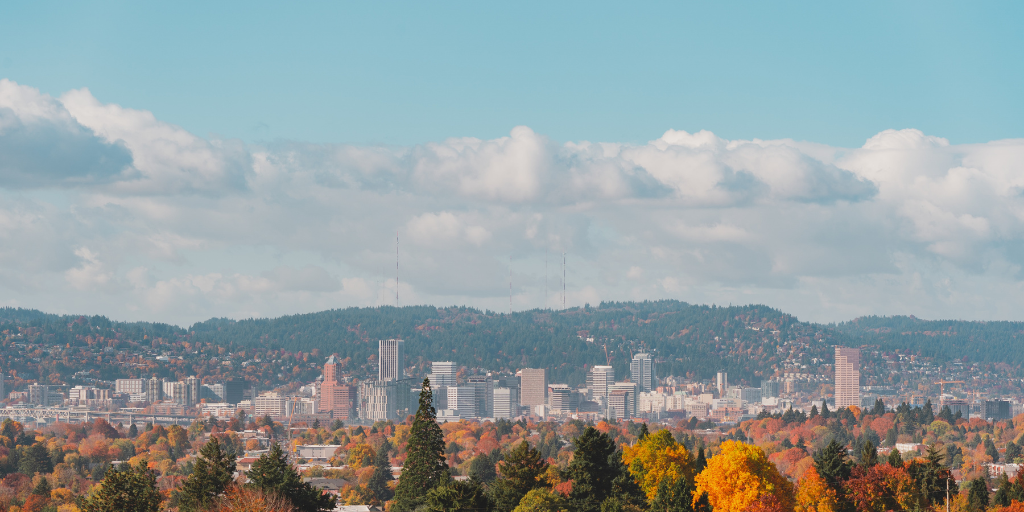Portland’s history is a tapestry woven with the threads of exploration, innovation, and progress. From its humble beginnings as a wilderness outpost to its present-day status as a thriving cultural and economic hub, the city’s journey is a testament to the resilience and vision of its people. The Emerald City remains a shining example of the Pacific Northwest’s enduring spirit and commitment to progress.
Native Roots and Early Settlement
Portland’s history begins with its Indigenous inhabitants, including the Tualatin, Yamhill, Ahantchuyuk, Tekopa, and many more. These Native Americans had lived and thrived in the area for thousands of years. Primarily, they relied on the fertile Willamette Valley for sustenance and established vibrant trading networks; this period reflects the city’s deep Native American heritage.
In the early 19th century, European explorers and fur traders began arriving in the region. Lewis and Clark, on their famous expedition, reached the Pacific Ocean near present-day Astoria, Oregon, in 1805. This event marked the first significant interaction between Euro-Americans and the area’s Indigenous peoples.
Founding in 1845
Portland’s founding can be attributed to two ambitious New Englanders: Asa Lovejoy and Francis Pettygrove. In 1845, they famously flipped a coin to decide the city’s name, with Pettygrove’s call for “Portland” triumphing over Lovejoy’s preference for “Boston.” The name “Portland” reflects the city’s maritime aspirations and proximity to the Willamette and Columbia Rivers.
Pettygrove—from Portland, Maine—owned Portland’s first house, store, wharf, and warehouse. Both men are now honored by Pettygrove Park and Lovejoy Fountain Park.
Portland was officially incorporated in 1849 and quickly established itself as a vital trading hub for settlers journeying to the fertile Oregon Country, which included parts of present-day Oregon, Washington, and Idaho.
The Oregon Trail and Growth
 The 1840s saw a massive influx of pioneers seeking fortune and a new life in the West. Portland’s strategic location along the Oregon Trail made it a natural stopping point for these travelers. With the arrival of the first steamship in 1850 and the completion of the Oregon Trail in the late 1860s, the city’s growth continued to surge, increasing from a mere 821 residents in 1850 to over 8,000 by 1870.
The 1840s saw a massive influx of pioneers seeking fortune and a new life in the West. Portland’s strategic location along the Oregon Trail made it a natural stopping point for these travelers. With the arrival of the first steamship in 1850 and the completion of the Oregon Trail in the late 1860s, the city’s growth continued to surge, increasing from a mere 821 residents in 1850 to over 8,000 by 1870.
During the latter half of the 19th century, Portland’s maritime industry thrived. The deepwater port allowed for the efficient transportation of goods, making it an essential link between the Pacific Northwest and the rest of the world.
In 1883, one of many transcontinental railroads reached the city, connecting Portland to the eastern United States and further bolstering its economic significance. Further rail line construction also connected hauling routes to varied parts of the Pacific Coast; this development cemented Portland’s position as a major trade center on the West Coast.
Challenges and Progress
Portland faced its share of challenges in the early 20th century. The Great Depression hit the city hard, leading to economic hardships for many residents. However, the city demonstrated resilience during this period, and the construction of the Bonneville Dam on the Columbia River in the 1930s provided jobs and helped jumpstart the local economy.
By the mid-20th century, Portland was ready to embark on a new phase of growth and transformation. While urban renewal projects led to the demolition of some historic buildings, they also brought about significant changes and improvements, such as the development of the Portland State University campus and the city’s transportation infrastructure.
Portlandia and Sustainability
In the late 20th century, Portland gained national attention as a hub of environmentalism and progressive urban planning. The popular television show “Portlandia” humorously captured the city’s unique cultural identity and commitment to sustainability, a reputation that still holds today. Basically, the city is the capital for hipsters all over the country.
As we entered the 21st century, Portland’s commitment to sustainability only grew stronger. The city became a model for green urban planning, boasting an extensive public transit system, a thriving bike culture, and an abundance of parks and green spaces. This year, Portland was named the third most eco-friendly city in the United States by WalletHub.
Portland’s public transit system, known as TriMet, boasts over 700,000 boardings on a typical weekday, significantly reducing carbon emissions.
The Impact of Sports on the Local Economy
Portland is a city passionate about sports. It’s home to the NBA’s Portland Trail Blazers, the MLS’s Portland Timbers, and the NWSL’s Portland Thorns. The state also boasts the Oregon Ducks—aka the first team to wear the Nike brand.
The Trail Blazers’ Moda Center and the Timbers’ Providence Park host numerous events, attracting visitors nationwide. According to a report by the Greater Portland Economic Development District, the sports industry in the Portland metro area contributes over $1 billion annually to the regional economy.
In its nearly two centuries, Portland, Oregon, has transformed from a small trading post to a bustling, sustainable city celebrated for its culture, green initiatives, and passionate sports fanbase. Its history is a testament to adaptability, innovation, and resilience, shaping the Rose City into the vibrant and environmentally conscious place we know today. As Portland continues to evolve, it remains an exemplar of progress, proving that even the most humble beginnings can lead to remarkable achievements.









